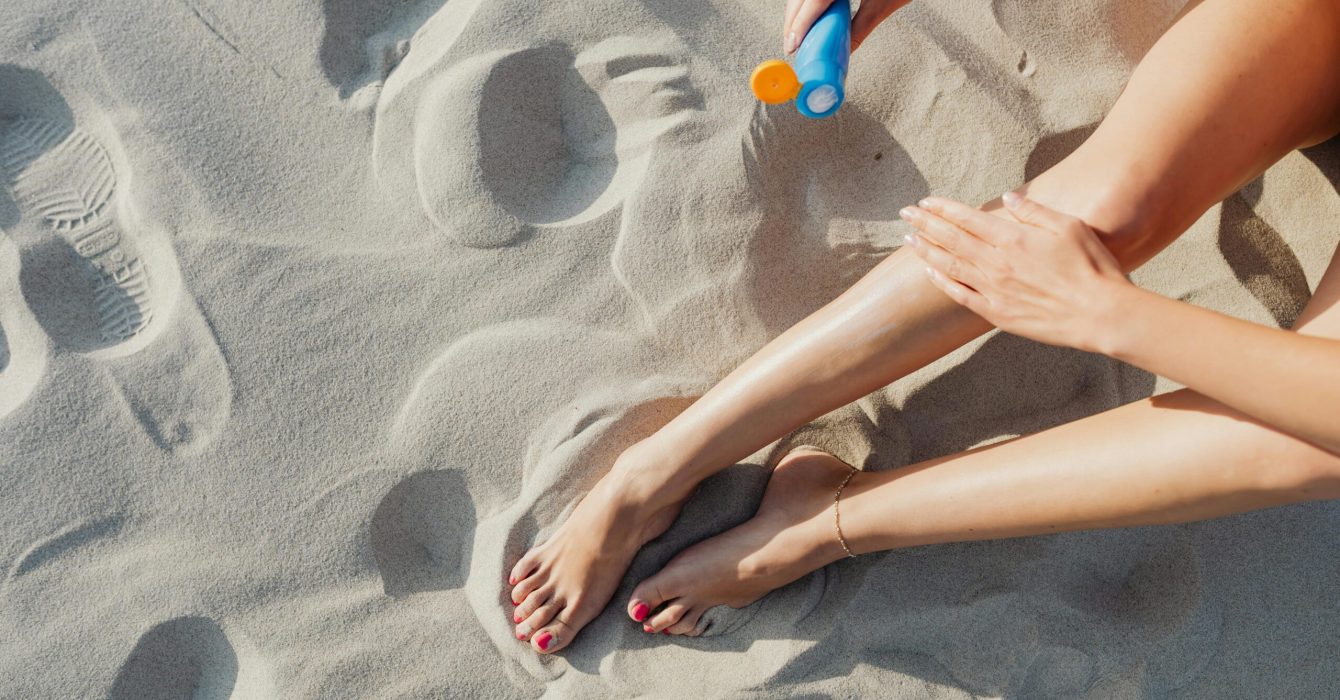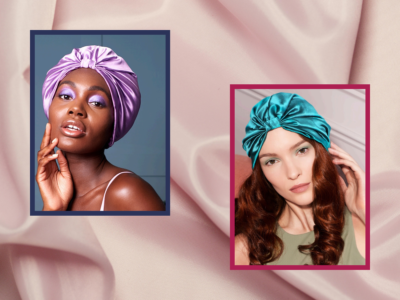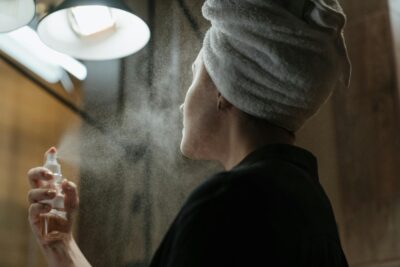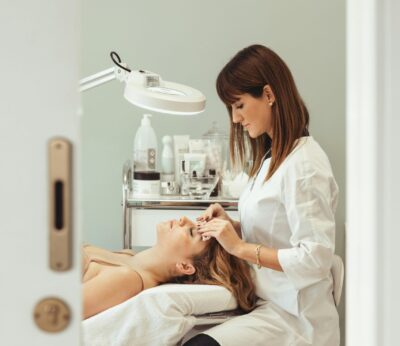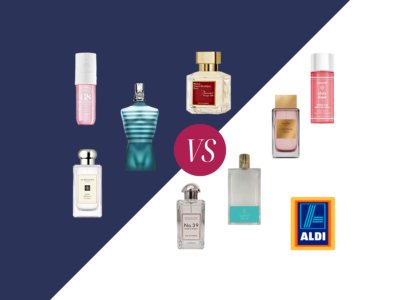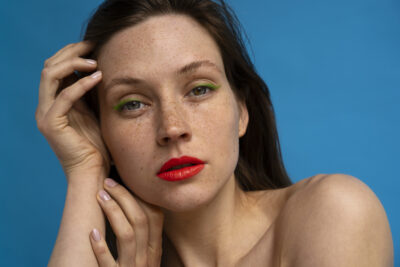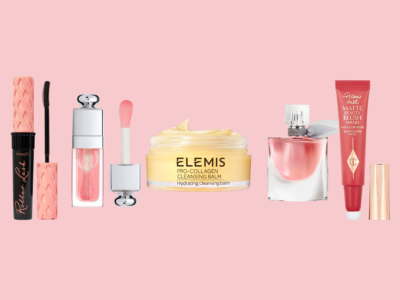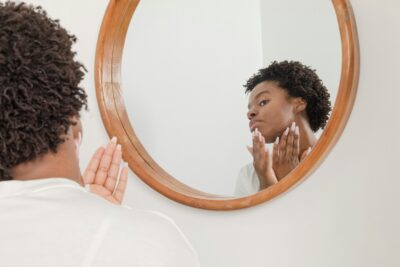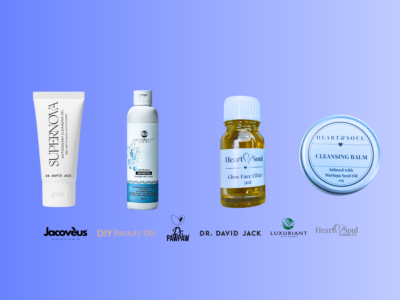As experts and skin cancer survivors rally behind MP’s VAT Burn campaign to make SPF more accessible, we reveal the best affordable sunscreens to use right away.
In a country famed for bad weather, skin cancer may not be most people’s top concern — and yet diagnoses are skyrocketing. Almost twice as many people die from skin cancer here in the UK than in Australia. Temperature has nothing to do with it, proven by Scotland having the highest rate of skin cancer in the UK despite lower average temperatures.
And neither does age — Scottish MP Amy Callaghan was first diagnosed with skin cancer at the age of 19 and then again at 21. Now, her VAT Burn campaign is not only calling on the government to scrap tax on sunscreen products, but to mandate that brands lower prices in line with this reduction (unlike period products where brands pocketed the difference after VAT was removed).
In support of VAT Burn beauty retailer Face the Future are removing the value of VAT from all sunscreens until the end of May, and encouraging people to wear it daily with its 366 Days of SPF campaign.
Is SPF really an essential item?
You might not think of SPF as a must-have healthcare product warranting the removal of VAT, but currently only 22% of people in the UK wear SPF every day (rising just to 55% on sunny days), 40% only buy it for a holiday and 64% say it’s too expensive — according to research by Face the Future.
But go to a dermatologist or find one on social media and you’ll hear them advising that everyone — no matter their skin tone — should wear it every day of the year and reapply when outside. But if we’re buying sunscreen under doctors’ orders, why should we pay VAT?
On top of that, the rate of skin cancer diagnoses in the UK are doubling every 10 to 20 years, costing the NHS more than £500m a year to treat — all of which could be drastically reduced by daily sunscreen usage.
Why do we need sunscreen in winter?
Even on a cloudy day with temperatures below zero, the sun is damaging our skin. There are two main UV rays that reach the earth’s surface: UVB, which is responsible for burning, which makes it more of a concern in hot weather or high altitudes (think of the ‘B’ as standing for ‘burning’); and UVA, which is present year-round, penetrating through clouds and windows to reach our skin, and is responsible for the damage which ages our skin (think ‘A’ for ‘ageing’) — but also cellular harm that can lead to skin cancer. Dr Emma explains: “A lot of damage is invisible and accumulative. People may not burn, but what they don’t see is the damage in the skin.”
How much sunscreen should we apply?
Even when we do apply sunscreen, we might not be getting the full SPF protection we see on the bottle. Dermatologist Dr Emma Wedgeworth explains: “SPF is tested at 2mg per square centimetre — which is more than people use, so in real world conditions we could be getting half of what we think we’re getting.” To rectify this, Dr Emma advises to stick to SPF50 all year round and to make sure you’re applying the correct dosage (usually half a teaspoon measurement for face and neck, or three finger lengths).
She also warns that, while SPF sprays, powders and sticks are acceptable for a quick top up in a rush or on the go, they’re no replacement for reapplying a sun cream.
Read more: The best SPF sunscreens for all types of skin

What type of sunscreen is better, mineral or chemical?
Dermatologist Dr Derrick Phillips says: “The best sunscreen is the one you’ll use.” While he does point out mineral sunscreens (with zinc oxide or titanium dioxide) tend to be better for hyperpigmentation as they protect from visible light, especially when tinted too, the most important thing is wearing a broad-spectrum sunscreen every day.
And while mineral sunscreens may work better for hyperpigmentation, which dark skin tones are more prone to, they haven’t quite shaken off their sticky, white cast ways like chemical SPFs have. There’s only a few that give no white cast on dark skin — we recommend them below.
What is broad-spectrum sunscreen and how is it rated?
While SPF refers to protection from UVB, broad spectrum refers to the coverage from UVA. Unfortunately, there’s no universal standard like there is for SPF. In the UK, a logo of ‘UVA’ in a circle means high broad-spectrum coverage, while in Boots you’ll find a star rating up to five. In Asia there’s a PA rating up to four — worth noting due to growing popularity of Korean and Japanese sunscreens which are becoming increasingly available to buy in UK stores.
Read more: We tested chemical & mineral sunscreens to find the best

The best affordable sunscreens
The entire Altruist sunscreen range was created to offer ‘high-quality sunscreen at the lowest possible price’. Developed by dermatologist and skin cancer surgeon Dr Andrew Birnie, who partnered with some of the best sunscreen formulators across Europe. Prices start at just £5.25 for 100ml (most facial SPFs are 50ml), making it one of the most affordable options out there.
Bondi Sands Sun Lotion Face SPF50+ is just £7.99 for 75ml. A little on the heavy side, it’s better suited to dry skin (or in place of a moisturiser thanks to ingredients like vitamin E and aloe vera) but has no white cast, making it suitable for all skin tones. You can get it on facethefuture.co.uk where there’s no VAT cost on sunscreens until the end of May 2024.
Another one slightly more suited to dry skin, the SPF50 Face Lotion By Beauty Bay is £9 for 50ml, with a formula so runny it feels more like a serum — but very moisturising. It also promises pollution protection thanks to cone flower, while also reducing redness.
A jump in price now, but a fantastic option for oily and acne-prone skin, Tocobo’s Bio Water Sun Cream SPF50+ offers super-high protection in a lightweight, fast-absorbing formula that’s fantastic for all skin types and tones. It contains hyaluronic acid to hydrate skin, as well as mung bean extract, which can control oil production and reduce breakouts while also reducing inflammation and redness.
The Boots Soltan range offers an array of fantastic sunscreens for the face and body at extremely impressive prices, starting at just £4. You’ll find sprays and creams for body and face with varying formulations to target sensitivity, skin brightening, anti-ageing and more, as well as SPFs formulated for children (including a handy roll-on for quick and easy top-ups).
Unfortunately, when we get into mineral sunscreens that work on dark skin tones, our options become limited, prices jump up and SPF lowers. The most affordable and skin tone-inclusive option out there is the Kinship Self Reflect Probiotic Moistursing SPF32 (£27 for 50mg or £43 for 100mg). Promising to soothe acne-prone skin with turmeric and probiotics to support skin health, it leaves a subtle glow on skin.
Next is Summer Fridays Shadedrops Mineral Milk Sunscreen SPF30 (£36) — this is one of the most lightweight mineral sunscreens you’ll find. Promising to be great for sensitive skin, it contains moisturising squalane and antioxidants from vitamin E without being at all heavy — making it great for all skin types and easy to reapply.

